Music is the most prominent art form of human culture. It has existed since 40,000 years and continue to evolve at an accelerating rate throughout the years. Music can inform us a lot about our culture and the dynamics of our daily lives and endeavors. And let’s not forget the recurring debate of « Old » versus « New », that highlights how different generations create and consume music.
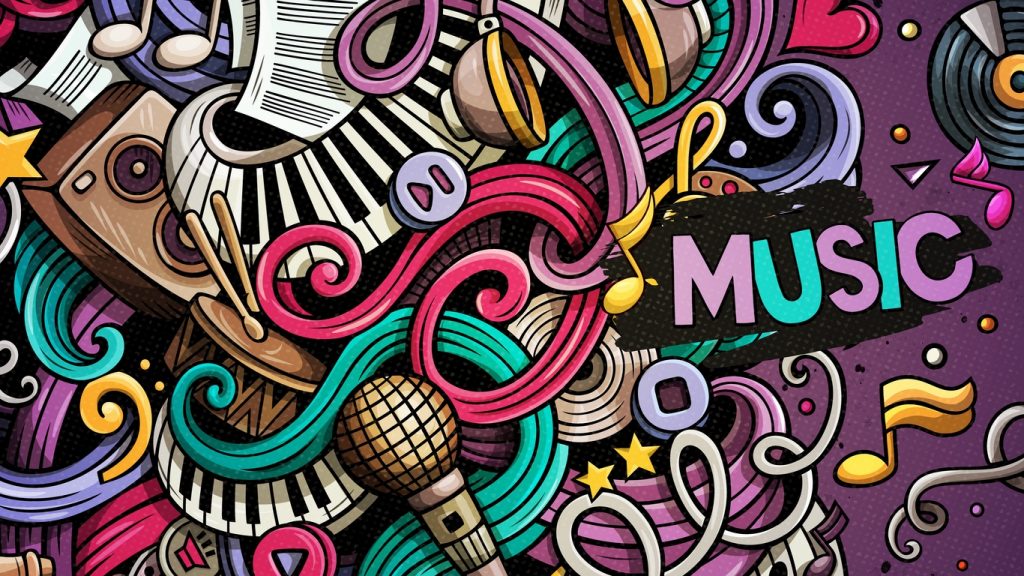
All of this brings up the question of, How did Music evolve through the recent decades ? And what are the lyrical and auditory features that changed?
Using billboard’s Hot 100 charts from 1950–2015, we want to take a closer look at
how much popular music has changed in the past six decades and find out what really distinguishes the music of today from the rest.
The Data
The data in question includes top English songs on the Billboard’s Hot 100 of each single year from 1950 until 2015.
For each song in these lists we gathered the following info:
- Genre
- Artist’s Gender
- Duration
- Lyrics
- Audio clip
Then we analyzed the lyrics of each song to extract the following features:
- Sentiment ( How positive, negative or neutral the lyrics are )
- Complexity: we used Flesch–Kincaid grade level to calculate the difficulty/complexity of the lyrics
And finally we use Spotify’s API to collect these sound features:
- acousticness: A confidence measure from 0.0 to 1.0 of whether the track is acoustic.
- danceability: It describes how suitable a track is for dancing.
- energy: Energy is a measure from 0.0 to 1.0 and represents a perceptual measure of intensity and activity.
- loudness: The overall loudness of a track in decibels (dB).
- speechiness: It detects the presence of spoken words in a track.
- tempo: The overall estimated tempo of a track in beats per minute (BPM).
Now we have our data complete let’s analyze it !
A Change of Taste
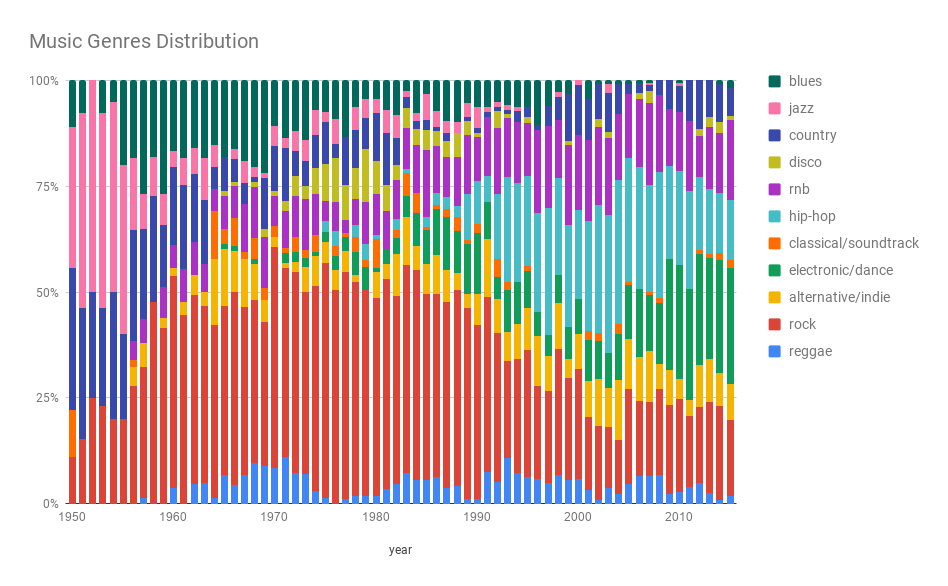
Looking at the graph above wo can segregate modern music into 3 periods:
- 1st Period (1950 – 1960): This characterized by very few genres and dominated by Country, Jazz and Blues.
- 2nd Period (1960 – 1990): more and more genres starts to appear, this period is largely dominated by Rock music.
- 3rd Period (1990 – 2015) : Rock is replaced by Hip-Hop, RnB and Electronic music.
Lyrical analysis
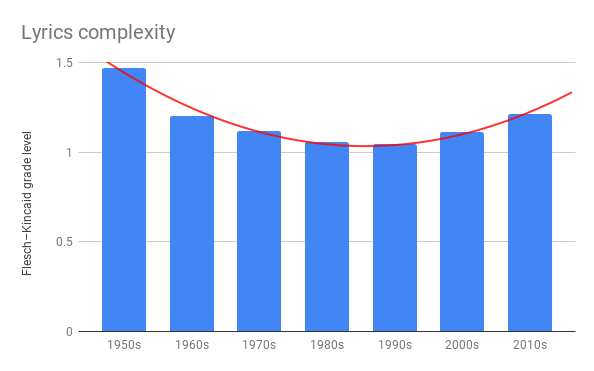
The lyrical complexity drops down during the golden age of rock compared to the other periods. Rock music rely heavily on instrumentation and melodic structures rather lyrical sophistication.

Lyrics have the tendency to have more negative meanings as time progresses.
As artist tend to cover more varied topics in their songs and aim to be more relatable to the average listener « negative » words tend to be used more.
It also could be an indication of an increased negative world view in our culture.
Sound Analysis
First thing to notice is the constant upward trend of the songs energy, danceability and loudness.
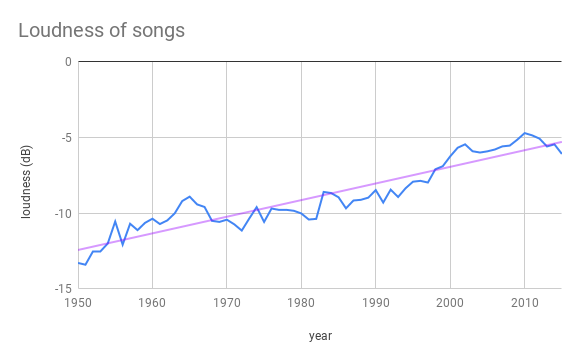
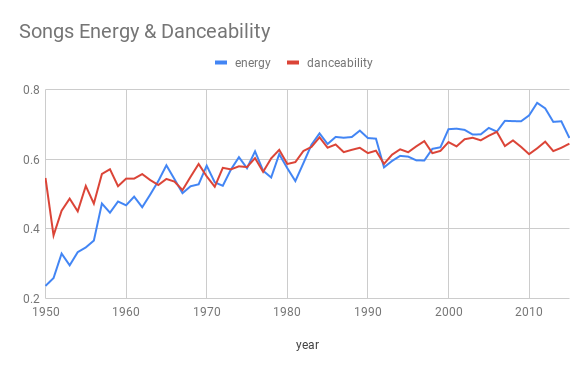
One reason for these trends is that loud music and music that makes you dance are the most re-playable songs and therefore generates more revenue for the artist. And since the music industry has become more hungry towards making large profits, artist would naturally choose to produce louder and more energetic music.

The only constant is the tempo of our songs that seems to always vary between 100 and 125 beats per minute
Identifying Eras
Two important metrics seem to define how music evolved in the past six decades.
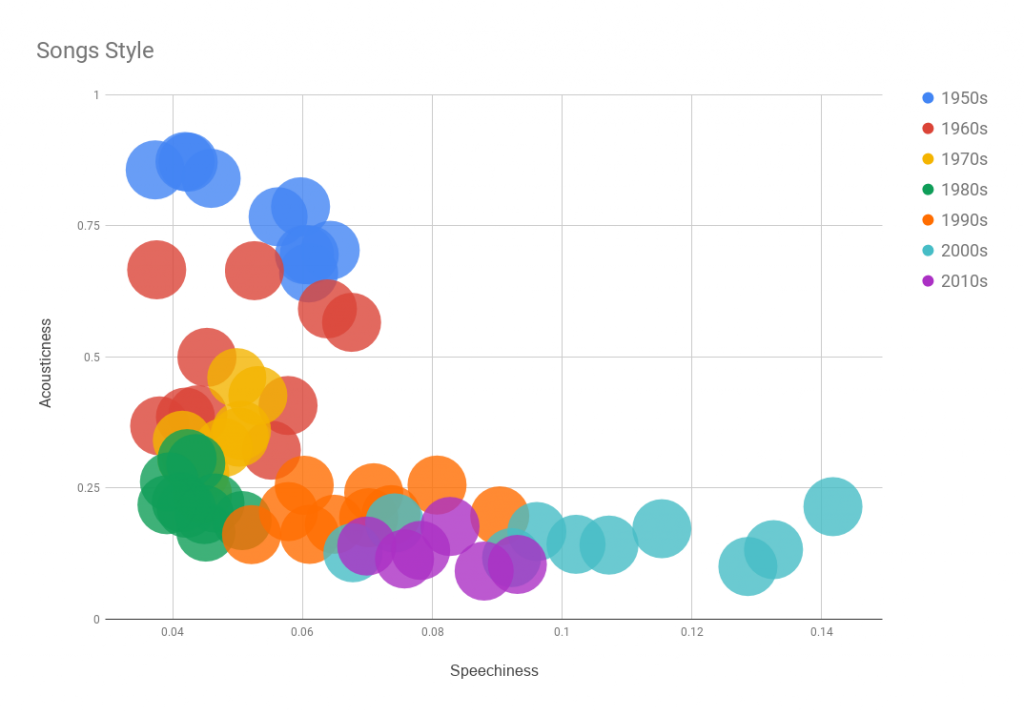
First we have acousticness that looked like dropping with time as artist moved to more synthesized sound production. Acousticness is largely influenced by the move to electronic songs and with rise of technology more producers are relying on computer software and other « artificial » technology to create their music.
Second we have speechiness, songs today are more packed with lyrics and spoken passages than what it was before.
As we can see each decade of music is easily identifiable based on where it lands on the graph.
Why is that ?
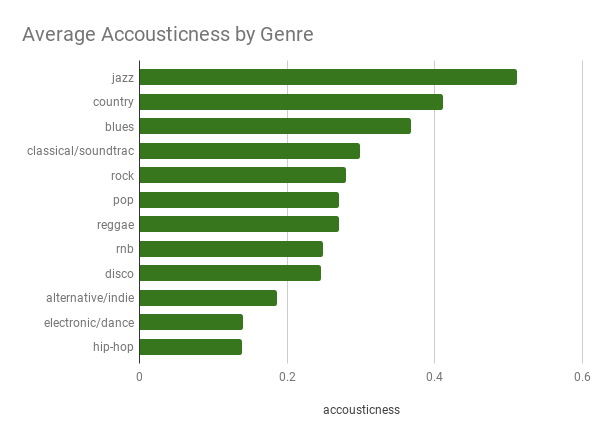
if we compute the average acousticness by genre we can clearly see that jazz, blues and country are all genres that are characterized by the sound of their raw instruments.
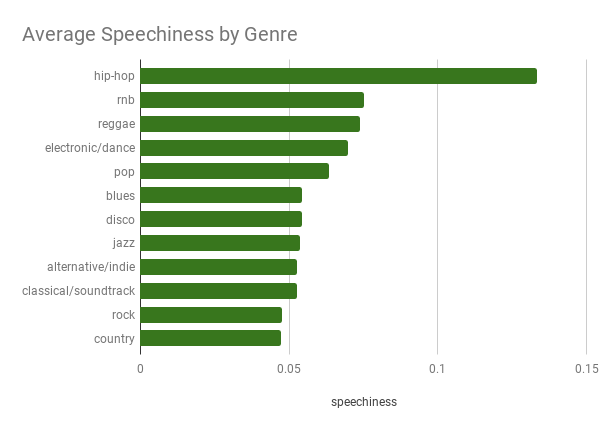
As for speechiness it clearly shows that the rise of hip-hop is main player of why today’s music is more rich with lyrics.
A Positive Trend
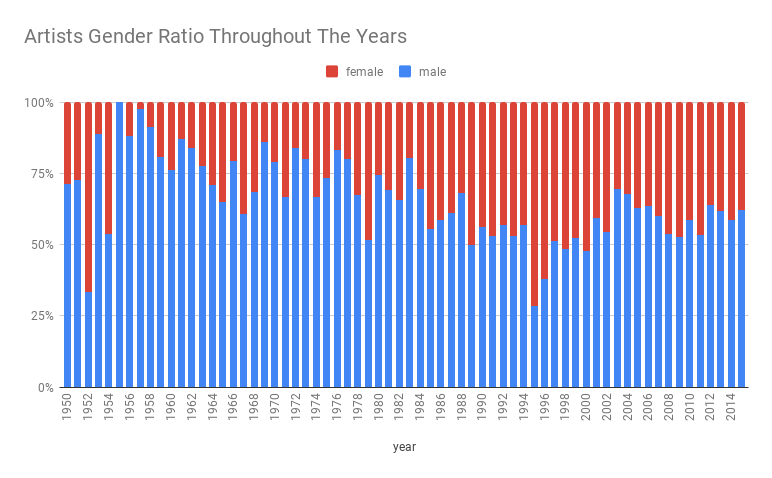
Through the years women are becoming more relevant in the music industry. This is a clear reflection of the more progressive culture of today compared to past decades.
What about the future ?
It is hard to predict what future music will bring, but one thing seems to be happening is that a lot of modern songs are joining elements and sounds of different style or genre together, as if we are moving to a merging of genres to a single genres (generally called pop) that can please the largest audience possible.In that way we would be moving away from the divided tastes that used to exist.
Similar to the 1960s for rock and 1990s for hip-hop then next big shift in pop music could be around the corner. It will be exciting to study how the popular culture and music will influence each other.
